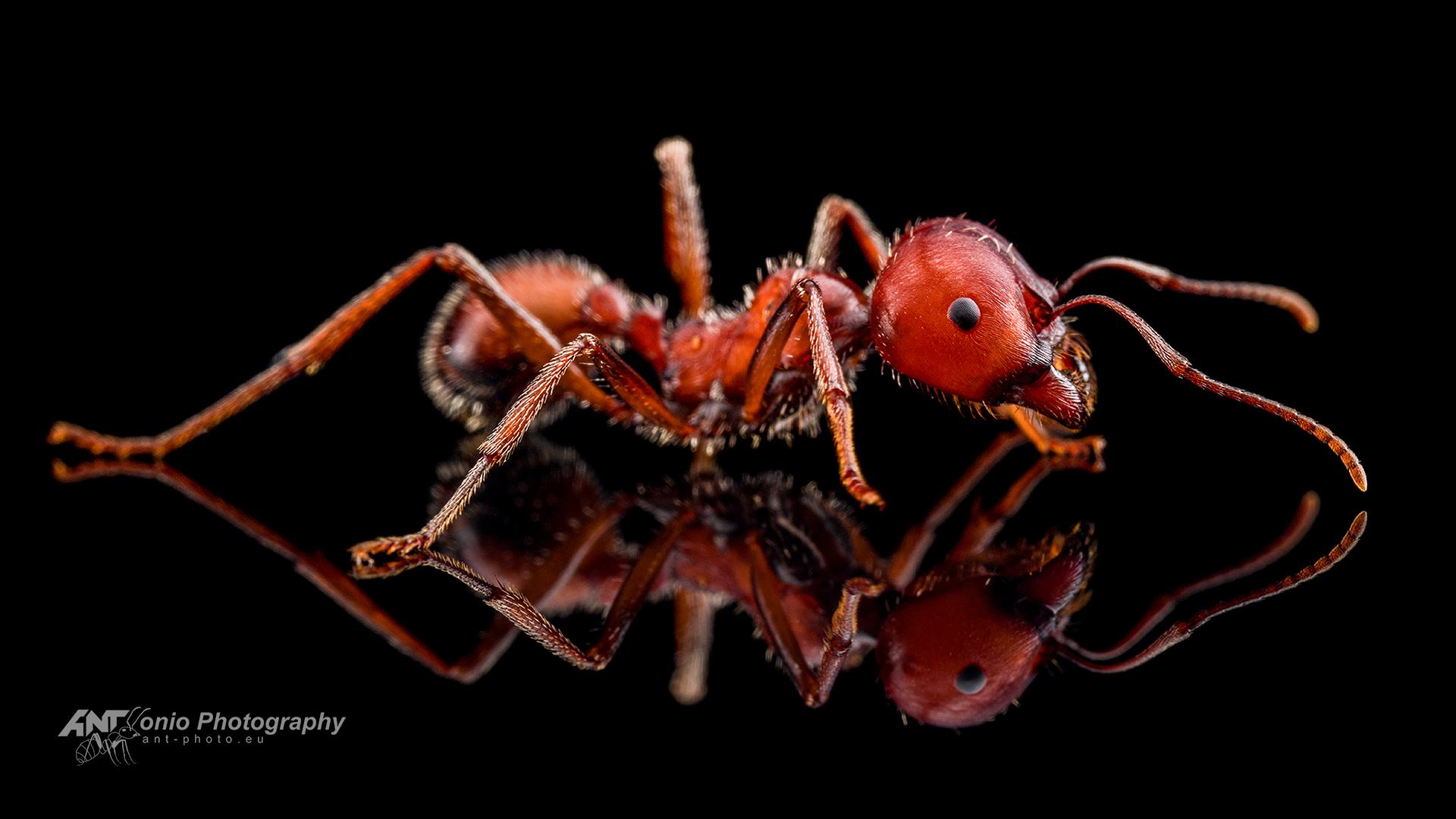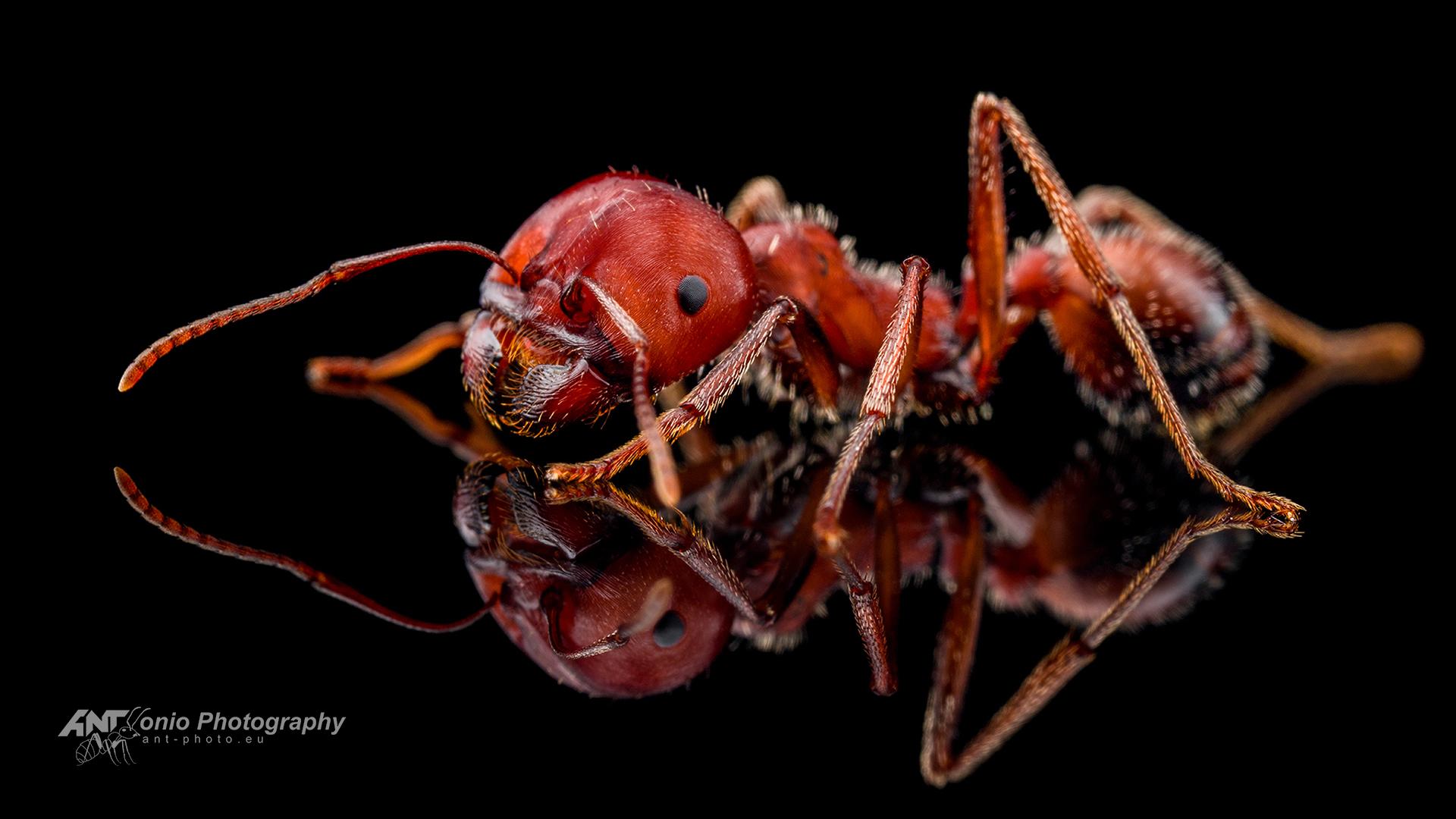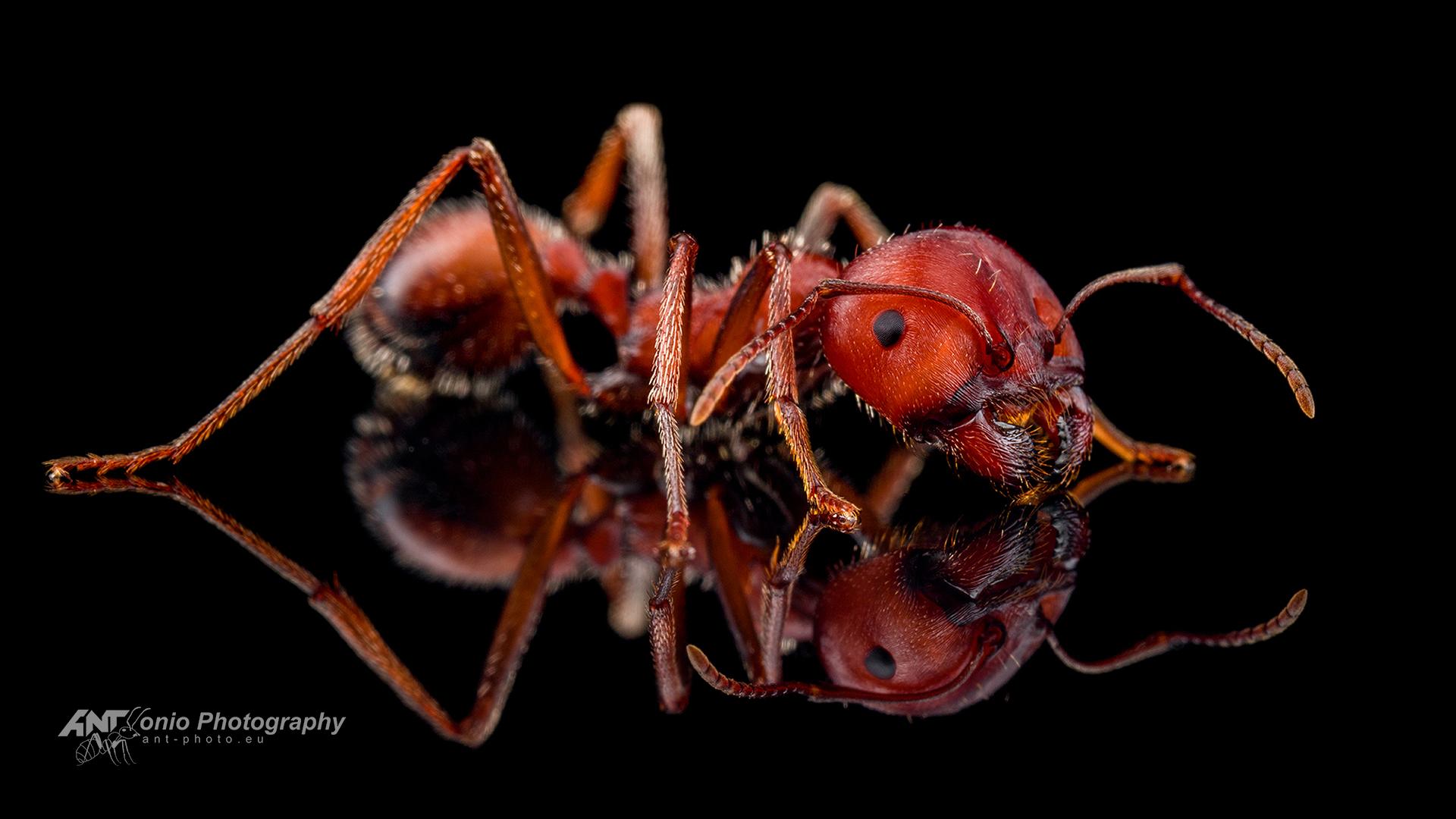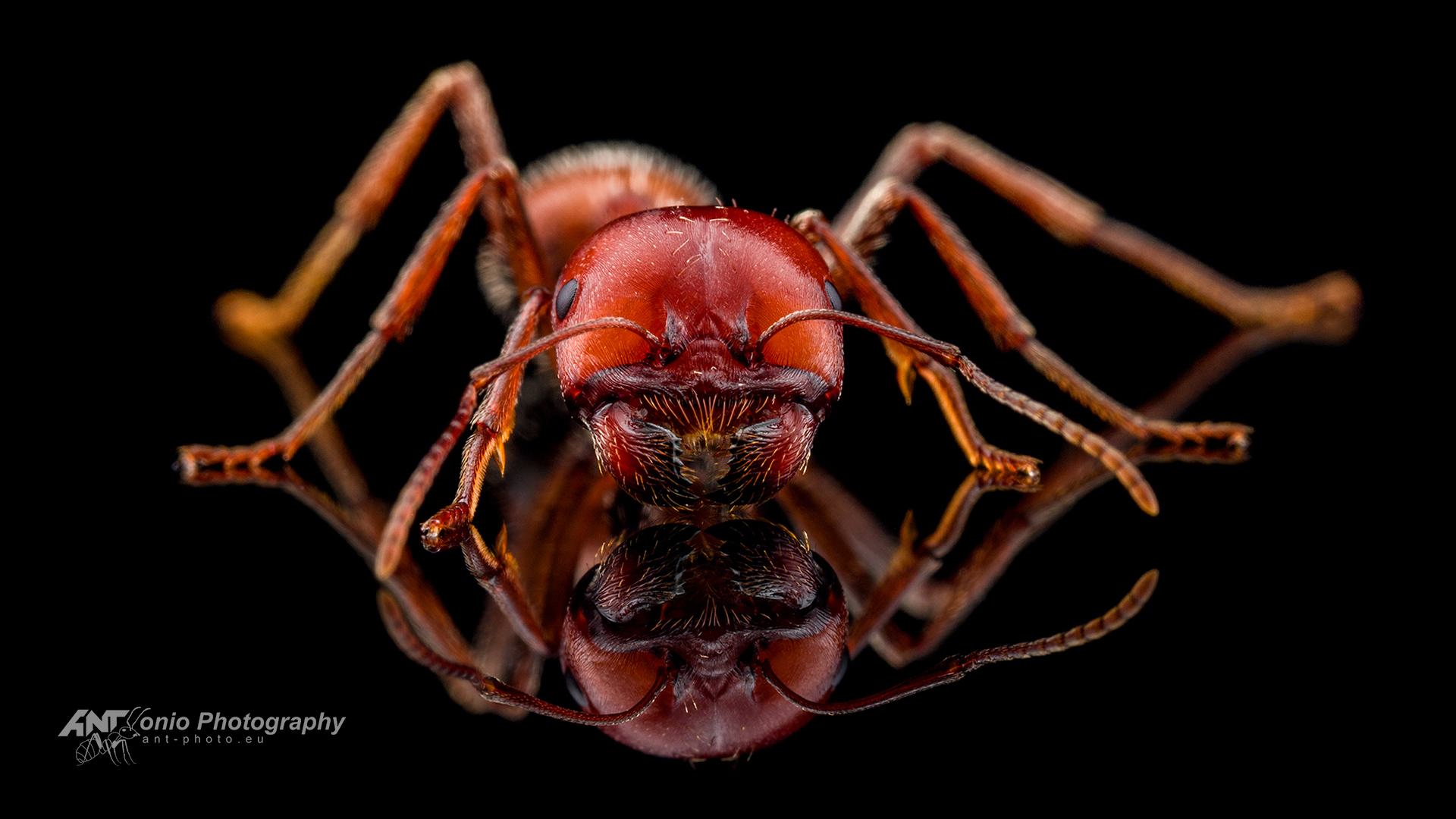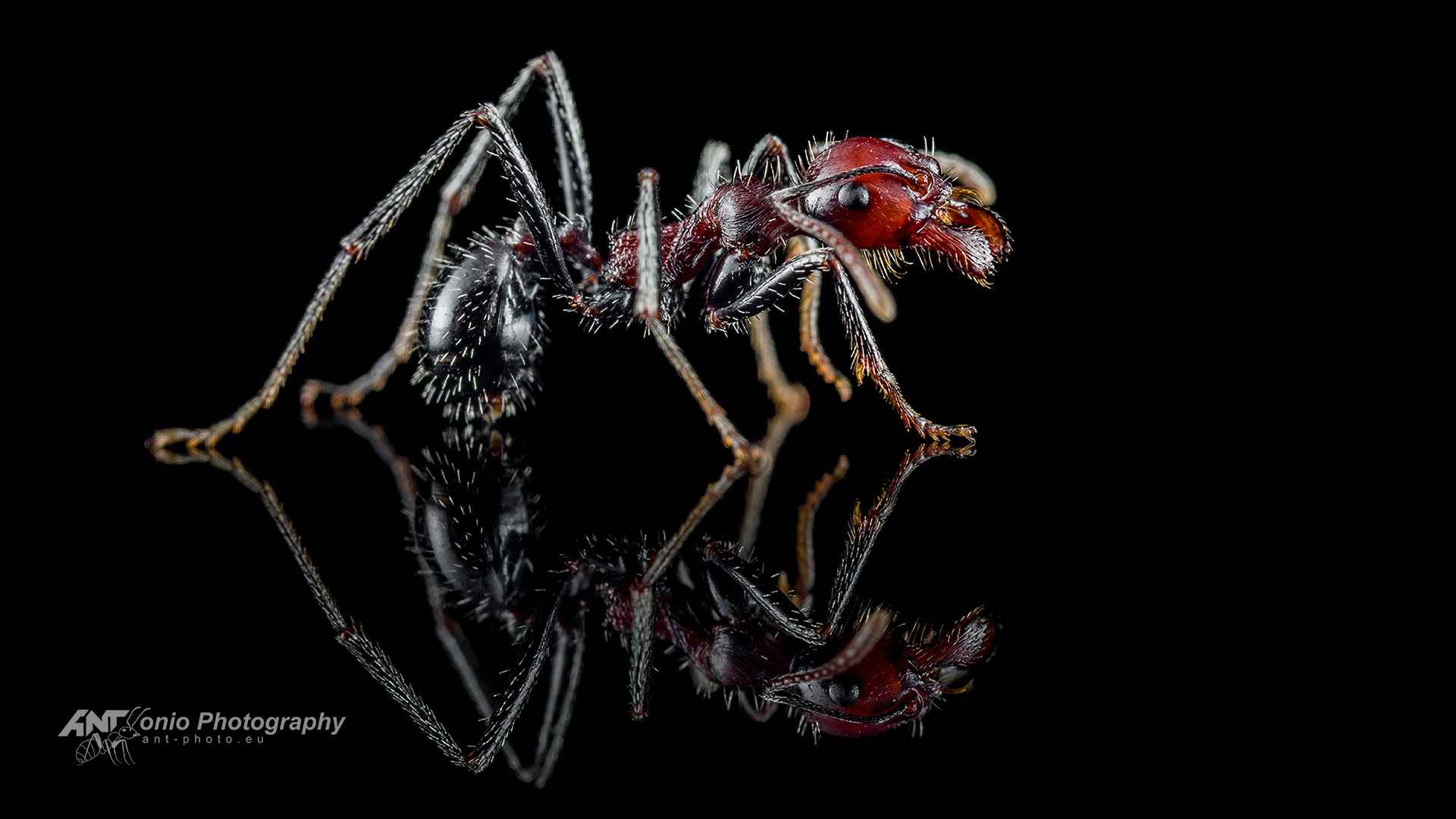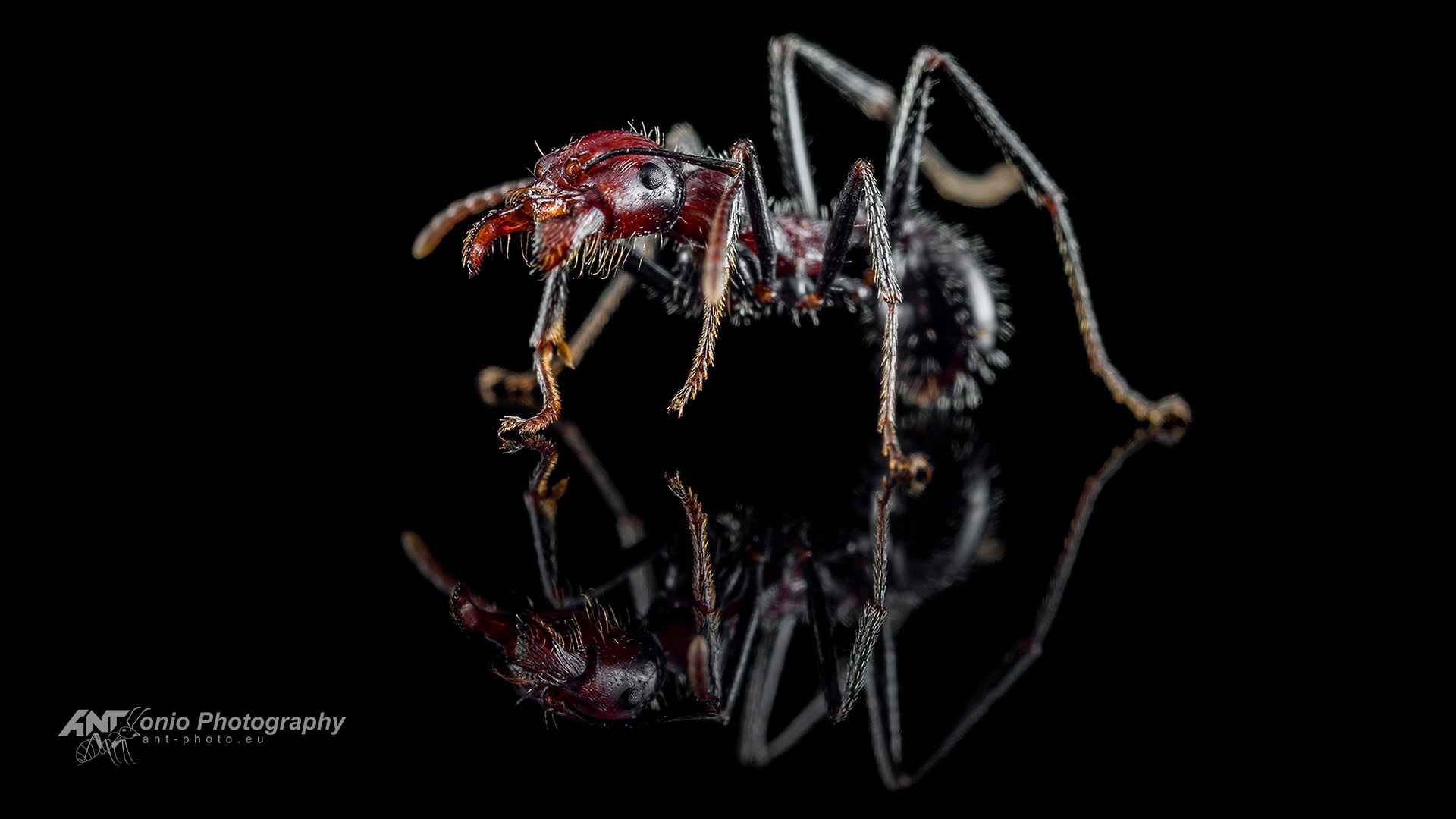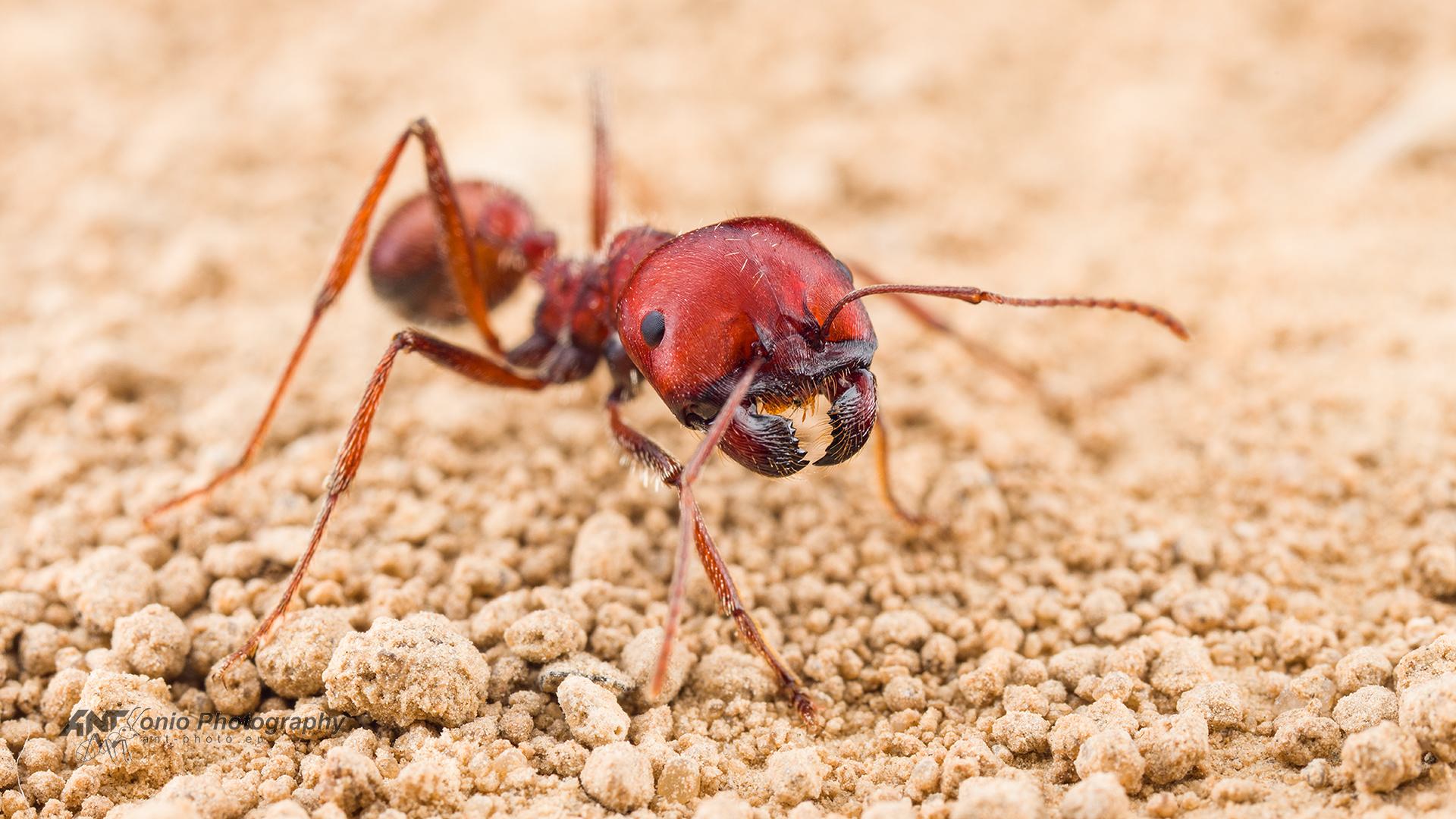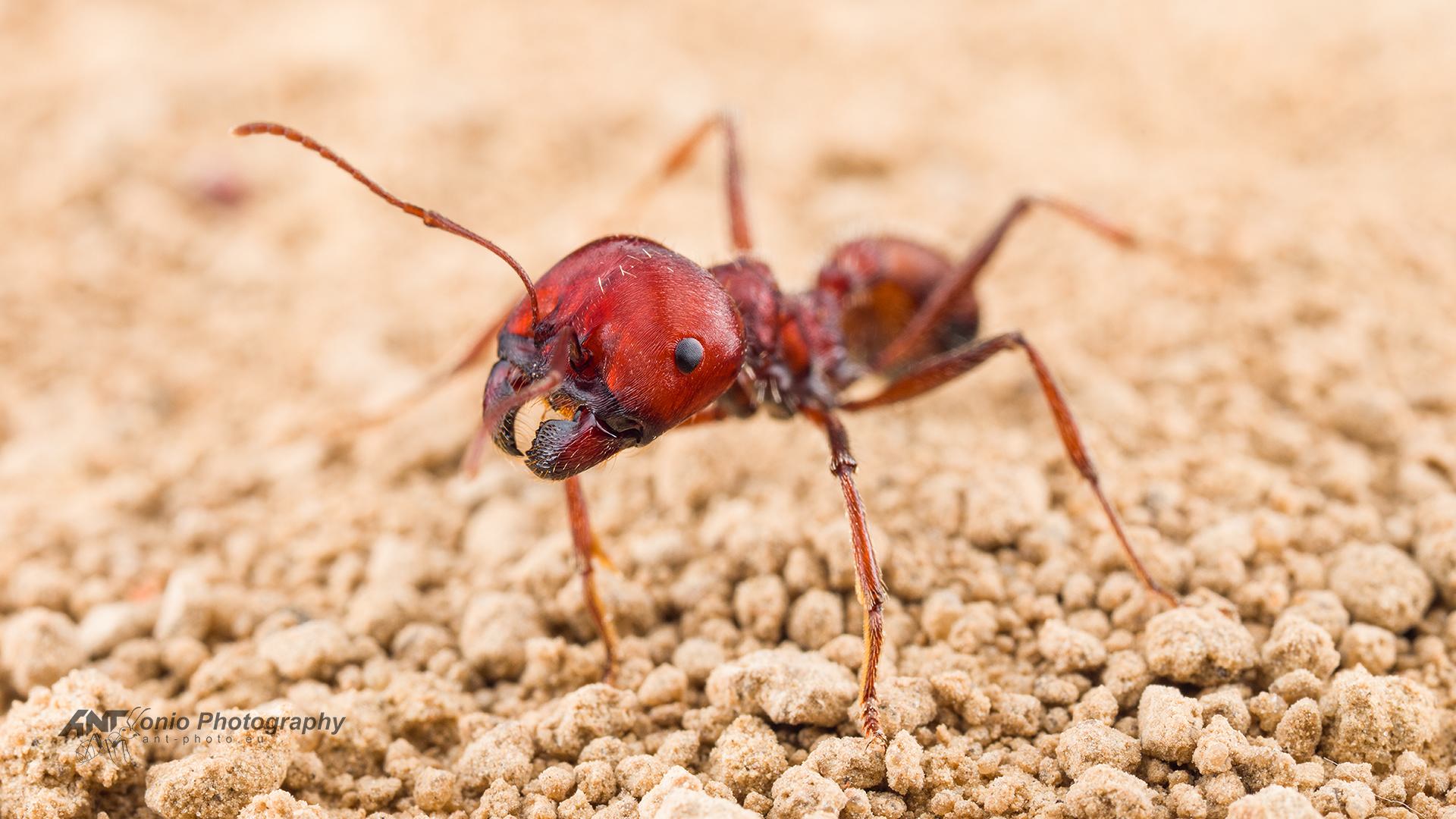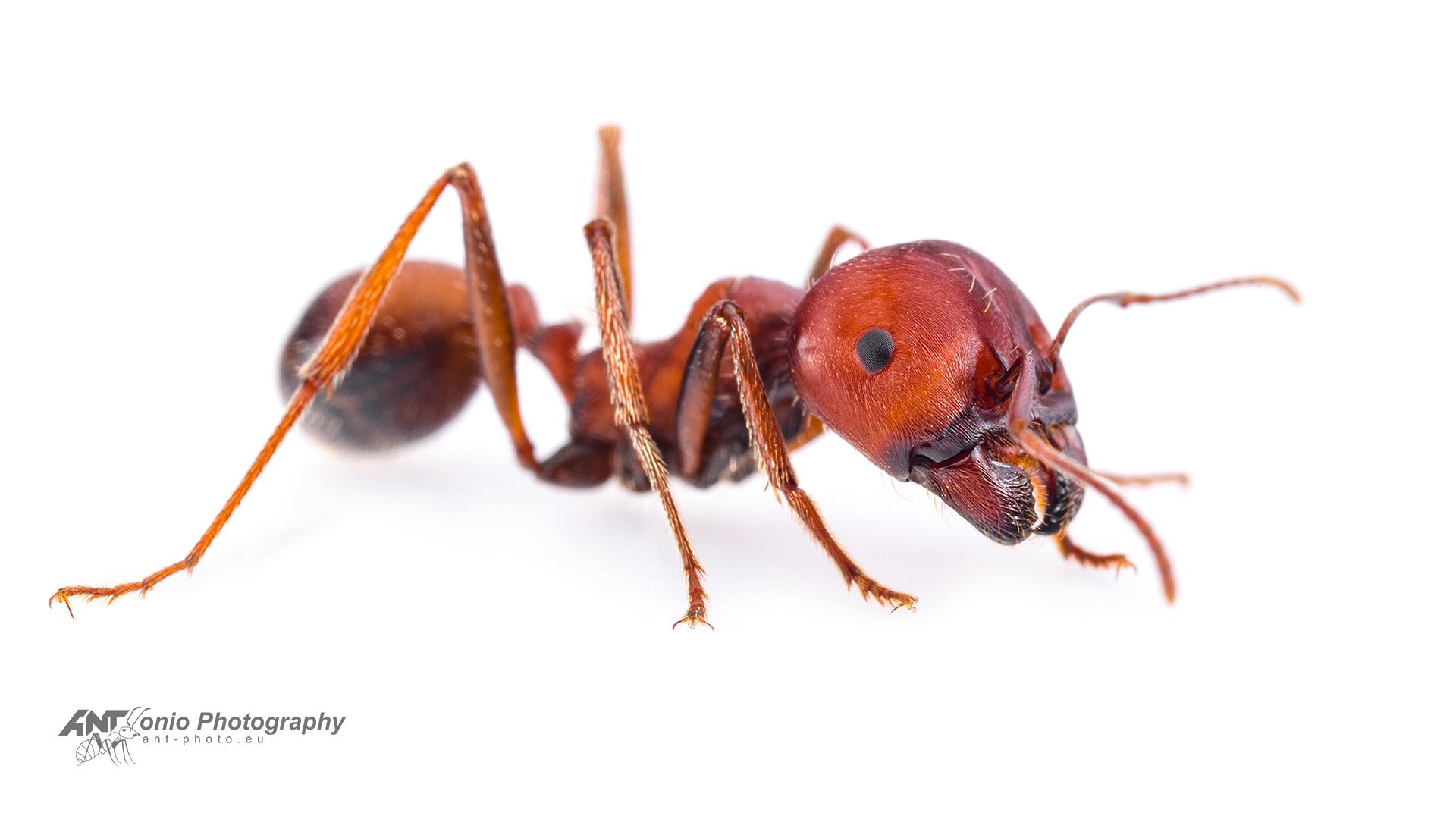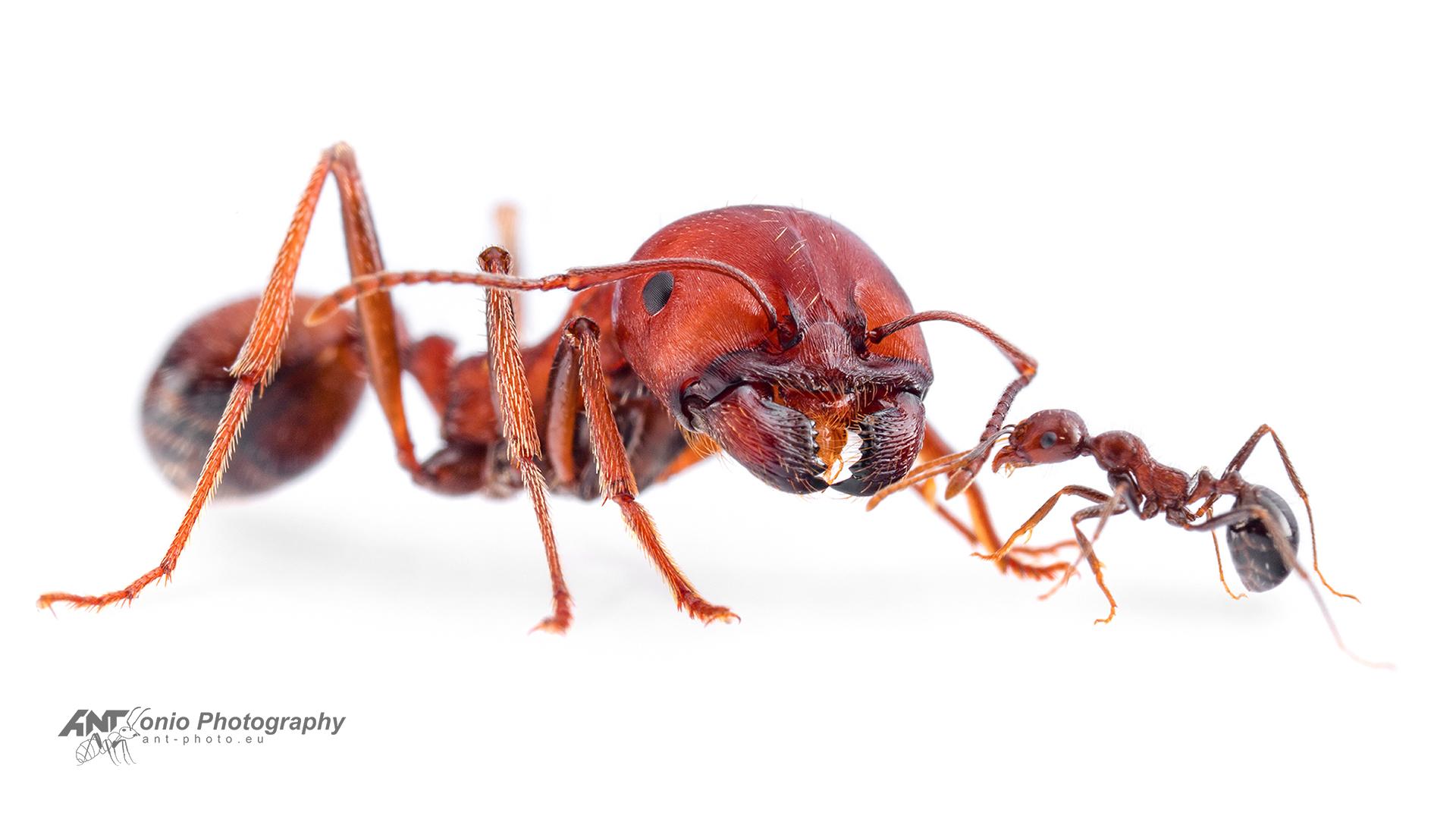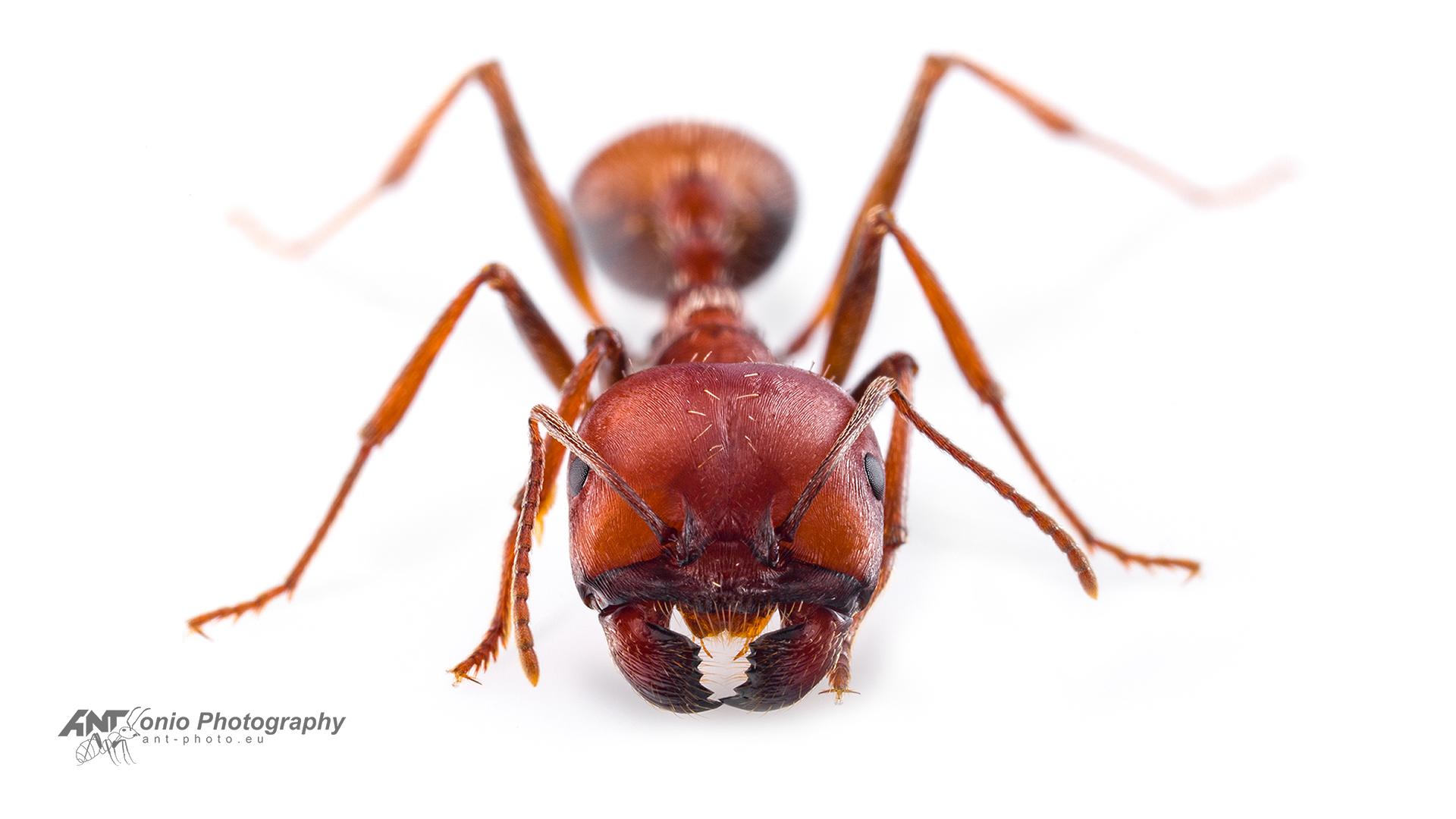Messor cephalotes
Giant African Harvester ants
| Rodzina | Family: | Formicidae |
| Podrodzina | Subfamily: | Myrmicinae |
| Plemię | Tribe: | Stenammini |
| Rodzaj | Genus: | Messor |
| Gatunek | Species: | M. cephalotes |
Messor cephalotes photo gallery
Opis / Description of Messor cephalotes
![]() Messor cephalotes to gatunek dużej żniwiarki zamieszkujący Etiopię, Kenię i Tanzanię. Żyje na suchych terenach trawiastych. Jest to największy gatunek z rodzaju Messor. Na szczególną uwagę zasługują robotnice major osiągające około 18mm. Dla porównania królowe największej mrówki Europy – Camponotus ligniperda mają takie same rozmiary. Królowe M. cephalotes mierzą aż około 25mm. Tworzą liczne kolonie dochodzące do 10000 robotnic.
Messor cephalotes to gatunek dużej żniwiarki zamieszkujący Etiopię, Kenię i Tanzanię. Żyje na suchych terenach trawiastych. Jest to największy gatunek z rodzaju Messor. Na szczególną uwagę zasługują robotnice major osiągające około 18mm. Dla porównania królowe największej mrówki Europy – Camponotus ligniperda mają takie same rozmiary. Królowe M. cephalotes mierzą aż około 25mm. Tworzą liczne kolonie dochodzące do 10000 robotnic.
Mrówki z rodzaju Messor nazywane są żniwiarkam z uwagi na sposób odżywiania i pozyskiwania pokarmu. Żywią się one w większości lub wyłącznie nasionami, które przechowują w specjalnych komorach gniazd, zwanych spichlerzami. Większość żyje głównie na suchych obszarach południowej Europy, Afryki oraz Azji. Z Polski wykazywany był jeden gatunek z rodzaju Messor – M. structor. Były to jednak pojedyńcze okazy robotnic.
Messor cephalotes tworzą szlaki feromonowe biegnące od gniazda do źródła pokarmu. Zbieraczki podążają ścieżką, po czym odłączają się od niej i w pojedynkę szukają nasion. Gdy już je znajdą wracają do miejsca w którym odłączyły się od szlaku i nim podążają do mrowiska. Robotnice zebrane ze szlaku i przeniesione na znaczną odległość nie są w stanie znaleźć drogi powrotnej, w przeciwieństwie do robotnic zebranych poza szlakiem, które to wracają z powrotem na szlak. Tak więc na szlakach mrówki podążają za zapachem pozostawionym przez swoje siostry i po przeniesieniu prawdopodobnie szukają feromonów. Robotnice, które odłączają się od ścieżki nawigują na podstawie ich otoczenia np. położenia słońca.
Messor cechują się polietyzmem wiekowym- nowo narodzone mrówki niezależnie od rozmiaru opiekują się potomstwem lub królową. Dopiero starzejąc się zaczynają wychodzić poza gniazdo. Najstarsze osobniki wcale nie wchodzą już do gniazda, a ich jedyną rolą jest bronienie kolonii.
Mrówki mogą mieć zarówno pozytywny jak i negatywny wpływ na środowisko. Przykładem tego drugiego jest działalność Messor cephalotes. Usuwają one wszelką roślinność wokół swojego gniazda, powodując powstawianie gołych okręgów o średnicy dochodzącej do 8m. Gdy kilka gniazd występuje obok siebie tworzą się wielkie płaty pozbawione traw, których powierzchnia wynosi średnio ok. 60 m². Rośliny stanowią naturalną tarczę chroniącą glebę przed erozją. W suchym terenie obszary wcześniej pozbawione roślinności wolniej zarastają. Przez mrówki żniwiarki znacznie zmniejsza się wydajność ziem. W połączeniu ze złym prowadzeniem rolnictwa przyczyniają się do utraty terenów nadających się do wypasu bydła.
![]() Messor cephalotes is a species of large harvester ant living in Ethiopia, Kenya and Tanzania. They live in dry grasslands. It is the largest species of the genus Messor. Particularly noteworthy are the major workers, which can reach up to 18 mm. For comparison, the queens of the largest ant in Europe – Camponotus ligniperda – are about the same size. M. cephalotes queens measure approximately 25mm. They create colonies of up to 10,000 workers.
Messor cephalotes is a species of large harvester ant living in Ethiopia, Kenya and Tanzania. They live in dry grasslands. It is the largest species of the genus Messor. Particularly noteworthy are the major workers, which can reach up to 18 mm. For comparison, the queens of the largest ant in Europe – Camponotus ligniperda – are about the same size. M. cephalotes queens measure approximately 25mm. They create colonies of up to 10,000 workers.
Ants of the Messor genus are called harvester Ants because of what and how they eat. They feed mostly or exclusively on seeds, which they store in special nest chambers, called granaries. Most of them live mainly in the dry areas of southern Europe, Africa and Asia. One species of the Messor genus was recorded from Poland – M. structor. However, these were single specimens of workers.
Messor cephalotes create pheromone trails running from the nest to the food source. The foragers follow the path, then break off and look for seeds on their own. Once they find them, they return to the place where the trail was left and follow it to the nest. Workes collected from the trail and moved a considerable distance are unable to find their way back, unlike workers collected off the trail, which return back to the trail. So on trails, ants follow the scent left by their sisters and, once transferred, are likely looking for pheromones. Workers that detach from the path navigate based on their surroundings, e.g. the position of the sun.
Messor ants are characterized by age polyethism – newborn ants, regardless of size, take care of the offspring or the queen. Only when they get older, they start to leave the nest. The oldest individuals no longer enter the nest at all, and their only role is to defend the colony.
Ants can have both positive and negative effects on the environment. An example of the latter is the activity of Messor cephalotes. They remove all vegetation around their nest, creating bare circles up to 8 m in diameter. When several nests occur next to each other, large grass-free patches are created, the area of which is on average approximately 60 m². Plants are a natural shield that protects the soil against erosion. In dry areas, those previously devoid of vegetation become overgrown more slowly. Harvester ants significantly reduce the productivity of land. Combined with poor agricultural practices, they contribute to the loss of land suitable for cattle grazing.




